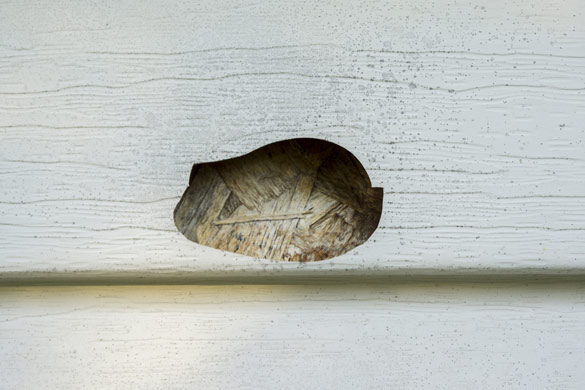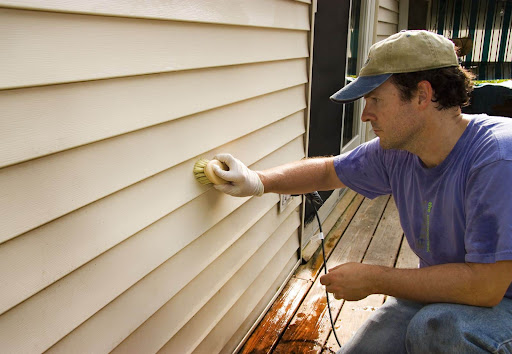
How often have you been faced with a vinyl siding hole? It’s almost inevitable that one will happen at some point. This is usually the result of a tree limb falling on your home or an animal digging up underneath it. Either way, there are a few things you need to know before fixing the problem yourself. This blog post will cover how to patch holes in vinyl siding and what materials you need for this project.
Remove the loose pieces of vinyl siding around the hole
Use a utility knife to remove any loose pieces of vinyl siding around the hole. Be sure to cut down into the subfloor so that it is not visible from outside your home. This will allow you access to patching material underneath, as well as apply adhesive correctly. You don’t want it falling back down!
Fill in the hole with a matching color caulking
Use a caulk color that matches your siding to fill in the hole. If you cannot find one, use paint to match it instead. This will make it much less noticeable than if you were to leave it as is.
Note: Vinyl Siding Holes Can be Caused by More Than Just Falling Branches!

Cover up any gaps with a matching vinyl piece
Once the caulking has dried, use a vinyl patch that matches your siding to cover up any gaps. You can find this in the same section as you found the caulk – just look for “patching” or “weatherproofing.” This will help keep water from getting underneath and causing further damage!
Let dry overnight before replacing the missing piece on top of it
Let dry overnight before replacing the missing piece on top of it. This will allow the sealant to set in fully.
#If you have an old house, this process may need to be repeated every few years.
Wind, rain, snow, sun exposure, and age can cause vinyl siding to deteriorate. This is especially important for homes with sheds or other outbuildings exposed to the elements on all sides. If you see any patches starting to peel, simply repeat the above process to fix it!

If you have leftover pieces of vinyl sheeting, store them away for future use!
Leftover pieces of vinyl sheeting can be used in the future when patching your siding. This will allow you to save money and reuse materials that would otherwise end up in a landfill!
Vinyl siding is a sturdy material, but it can be damaged by water and other outside elements. Thankfully, you don’t have to hire an expensive professional for this project – just follow the steps in our blog post! If your vinyl siding looks worn or has any holes, use these tips to patch them up before they get worse. And remember: if you’re ever stuck with leftover pieces of vinyl sheeting from past projects (or even brand new ones), store them away for future repairs that come up!



